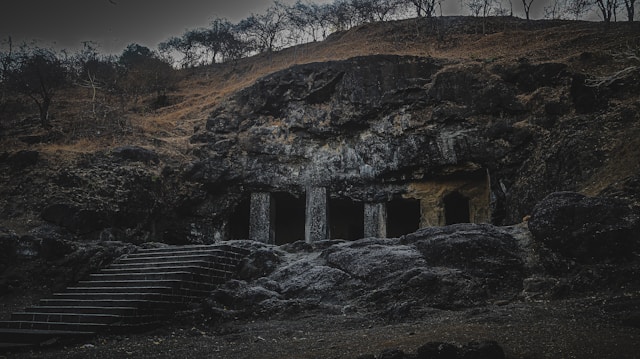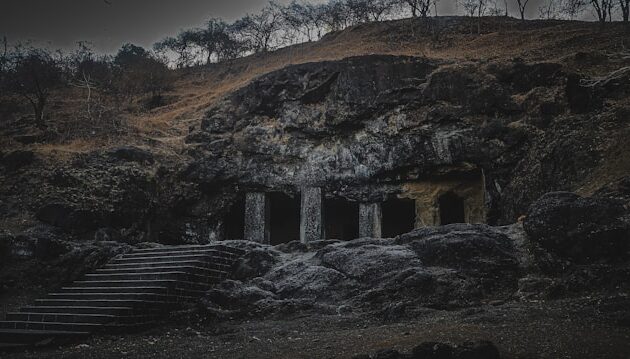
Located on Elephanta Island, just 11 km from Mumbai, the Elephanta Caves stand as a magnificent testament to India’s ancient cultural and artistic heritage. These rock-cut caves, dating back to the 5th to 8th centuries, are dedicated primarily to Lord Shiva and showcase some of the finest examples of ancient Indian rock architecture. Recognized as a UNESCO World Heritage Site, the Elephanta Caves attract history buffs, spiritual seekers, and tourists from around the world.
History and Significance of Elephanta Caves
The origins of the Elephanta Caves remain a mystery, with historical evidence pointing to their construction by the Kalachuri dynasty or possibly even the Chalukyas. These caves were a significant religious center for Hindu Shaivites and later fell under the influence of the Portuguese, who gave the island its name due to a large stone elephant sculpture they found near the shore.
Despite centuries of invasions and damage, the caves retain their artistic grandeur, making them an important cultural site. The temples and sculptures represent India’s rich mythological and religious traditions, reflecting a deep connection to ancient Hindu beliefs.
Architectural Marvels of Elephanta Caves
The Main Cave (Cave 1): The Great Shiva Shrine

The largest and most significant cave at Elephanta, known as Cave 1, is a stunning hall dedicated to Lord Shiva. This cave features a series of massive sculptural panels, each depicting different aspects of Shiva’s divine presence. The central attraction here is the Maheshmurti—a 20-foot-tall, three-headed Shiva statue that represents the trinity of creation, protection, and destruction.
- Trimurti Shiva: This colossal sculpture is the most famous and sacred artwork in the Elephanta Caves. It portrays Shiva in his three fundamental aspects: Bhairava (Destroyer), Vishnu (Preserver), and Mahadeva (Creator).
- Ardhanarishvara: A half-male, half-female depiction of Shiva, symbolizing the unity of Shiva and Parvati.
- Gangadhara: A stunning panel where Shiva is depicted bringing the river Ganga down to earth, demonstrating his divine power.
Cave 2 to Cave 5: Lesser-Known Wonders
While Cave 1 steals the limelight, the other caves at Elephanta also house smaller shrines and Buddhist stupas. These caves, though not as intricately carved, provide a glimpse into the evolution of Indian rock-cut architecture over time.
Symbolism in Elephanta Caves
Each carving within the Elephanta Caves tells a profound spiritual story. From Shiva’s cosmic dance to his manifestations as a divine teacher, every sculpture holds deep religious and philosophical significance. The caves also reflect the syncretic traditions of ancient India, where Hinduism and Buddhism coexisted harmoniously.
Best Time to Visit Elephanta Caves
The best time to visit the Elephanta Caves is during the winter months (November to February), when the weather is pleasant. The monsoon season (June to September), although beautiful, can make the ferry ride challenging due to rough seas.
How to Reach Elephanta Caves
- From Mumbai: The most common way to reach the caves is via ferry from the Gateway of India, which takes around one hour.
- From Elephanta Island: Once you reach the island, a small train or a walk up the 120 stone steps leads you to the caves.
Visitor Tips and Essential Information
- Entry Fee: INR 40 for Indian citizens, INR 600 for foreign tourists.
- Timings: Open from 9 AM to 5 PM, closed on Mondays.
- Photography: Allowed, but professional cameras may require special permission.
- Guided Tours: Hiring a local guide can enhance your understanding of the intricate carvings and history.
Conclusion: A Must-Visit Cultural Treasure
A visit to the Elephanta Caves is more than just a historical excursion—it is a journey into India’s spiritual and artistic legacy. With their awe-inspiring sculptures, mystical aura, and rich mythological significance, these caves offer a truly unforgettable experience for every traveler. Whether you are a history enthusiast, an architecture lover, or a spiritual seeker, the Elephanta Caves promise to leave you in awe.